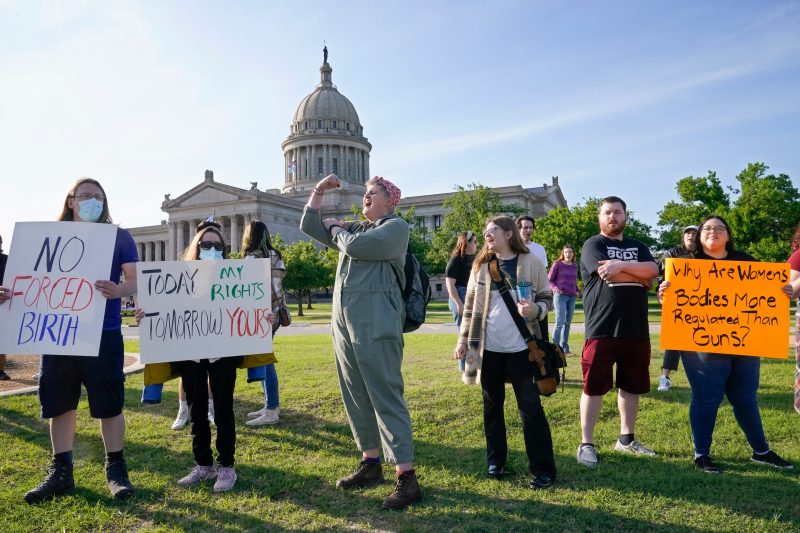
Oklahoma must allow abortion if mother’s life is threatened, court rules
The Oklahoma Supreme Court overturned part of the state’s near-total abortion ban, ruling in a 5-to-4 decision that the procedure would be lawful if there is a reasonable chance that a pregnancy could threaten a pregnant person’s life.
Oklahoma’s constitution protects the right to an abortion if “the woman’s physician has determined to a reasonable degree of medical certainty” that continuing “the pregnancy will endanger the woman’s life,” the court’s justices said in Tuesday’s ruling. “Absolute certainty” that the pregnancy will be life-threatening isn’t required, but “mere possibility or speculation” is insufficient, they added.
Previously, the state allowed abortions only in cases of medical emergencies, requiring the patient to “be in actual and present danger in order for her to obtain a medically necessary abortion,” the justices wrote.
The ruling means pregnant people no longer have to wait until “their life is literally on the line” to legally qualify for an abortion, said Khiara M. Bridges, a law professor at the University of California at Berkeley. But it’s a narrow win because people trying to avoid a potentially life-threatening pregnancy make up a small proportion of those seeking abortions, she said.
The justices said they would not rule on whether Oklahoma’s constitution “provides a right to an elective termination of a pregnancy,” or abortions that are carried out for reasons other than “preserving the life of the pregnant woman.”
More broadly, the lawsuit reflects the intensifying national debate over abortion rights after the U.S. Supreme Court overturned Roe v. Wade in June, leaving states to choose how much, and whether, to protect the right to abortion.
“You’re probably going to see more lawsuits” over whether states’ laws provide a broad right to abortion, and if there isn’t one, whether there are narrower rights to abortions, said Mary Ziegler, a legal historian at the University of California at Davis. The ruling in Oklahoma “is one of the first” such cases, she said.
John Kane, one of the dissenting justices, accused the concurring majority of disregarding “the interest of the unborn.”
“The thorny medical, philosophical, and practical debate of balancing the developing life of the unborn against the life of the mother, and the government’s involvement in those decisions, is a necessary and worthy dialogue for the people to commence,” Kane wrote.
But Oklahoma’s constitution doesn’t explicitly provide for the right to abortion, he said.
The lawsuit was brought by local abortion rights advocates and Alan Braid, an abortion service provider.
Planned Parenthood Great Plains, one of the plaintiffs, described the decision as “a small step in what will be a long journey to restore real, meaningful rights of Oklahomans over their own bodies.”
Oklahoma Gov. Kevin Stitt (R), meanwhile, said in a statement that he “wholeheartedly” disagrees with the ruling, which he said had no “mention of the unborn.”
Bridges said the ruling was a symbolic victory because one of the conservative justices, James R. Winchester, voted with his liberal-leaning colleagues to expand abortion rights. “It shows that people with different politics” can still be persuaded, she said.
